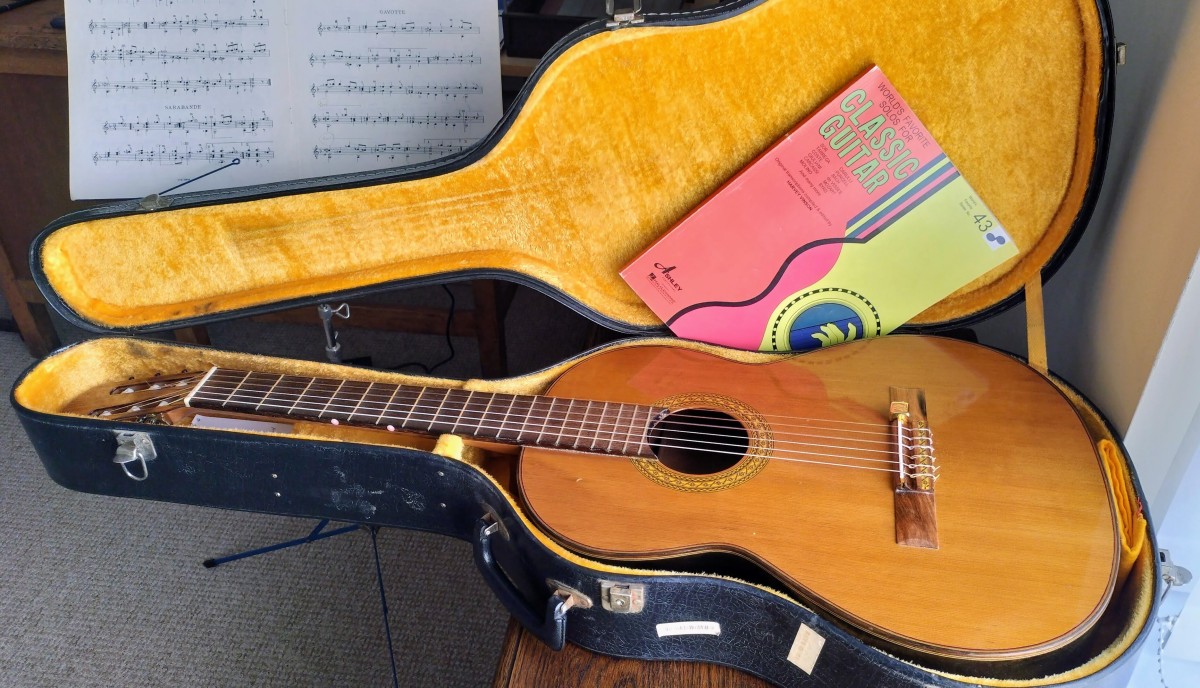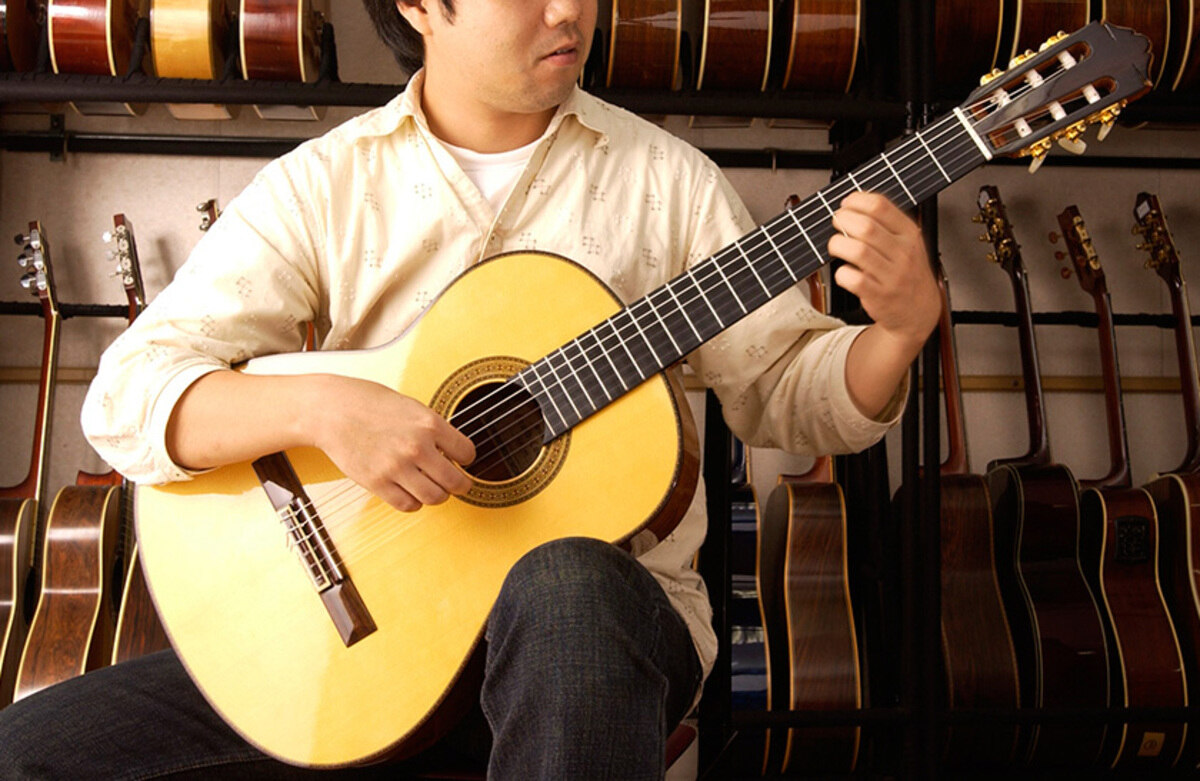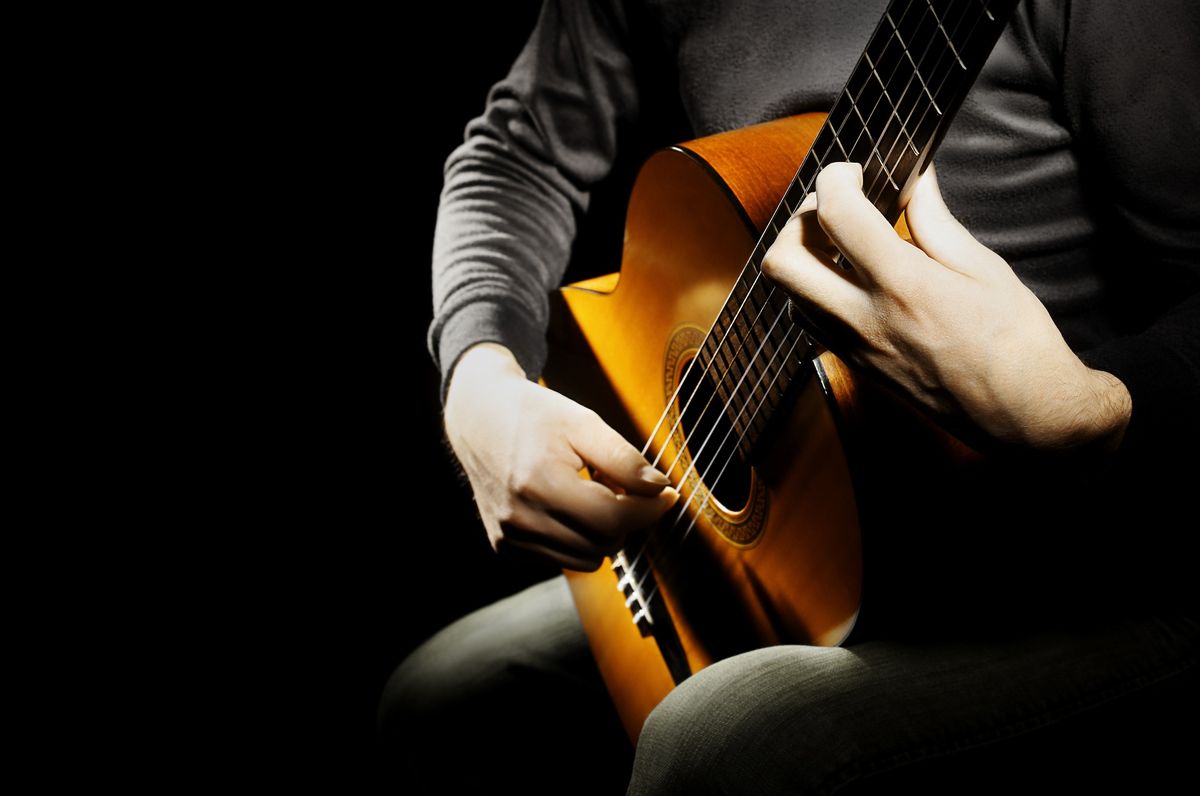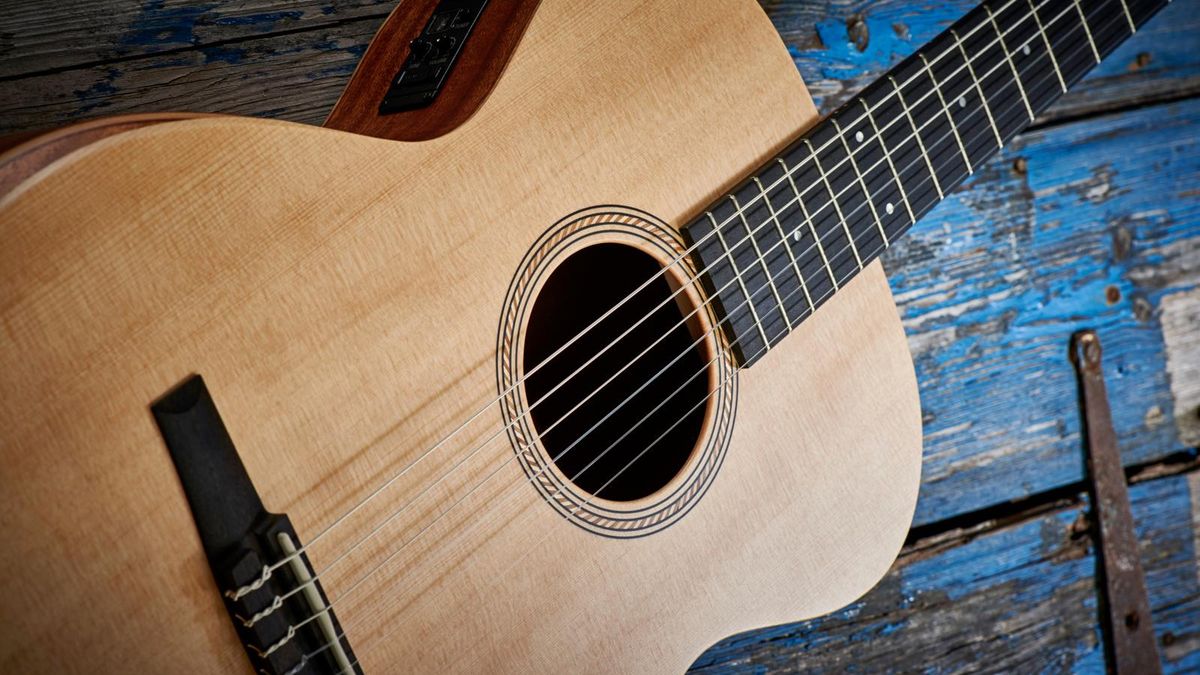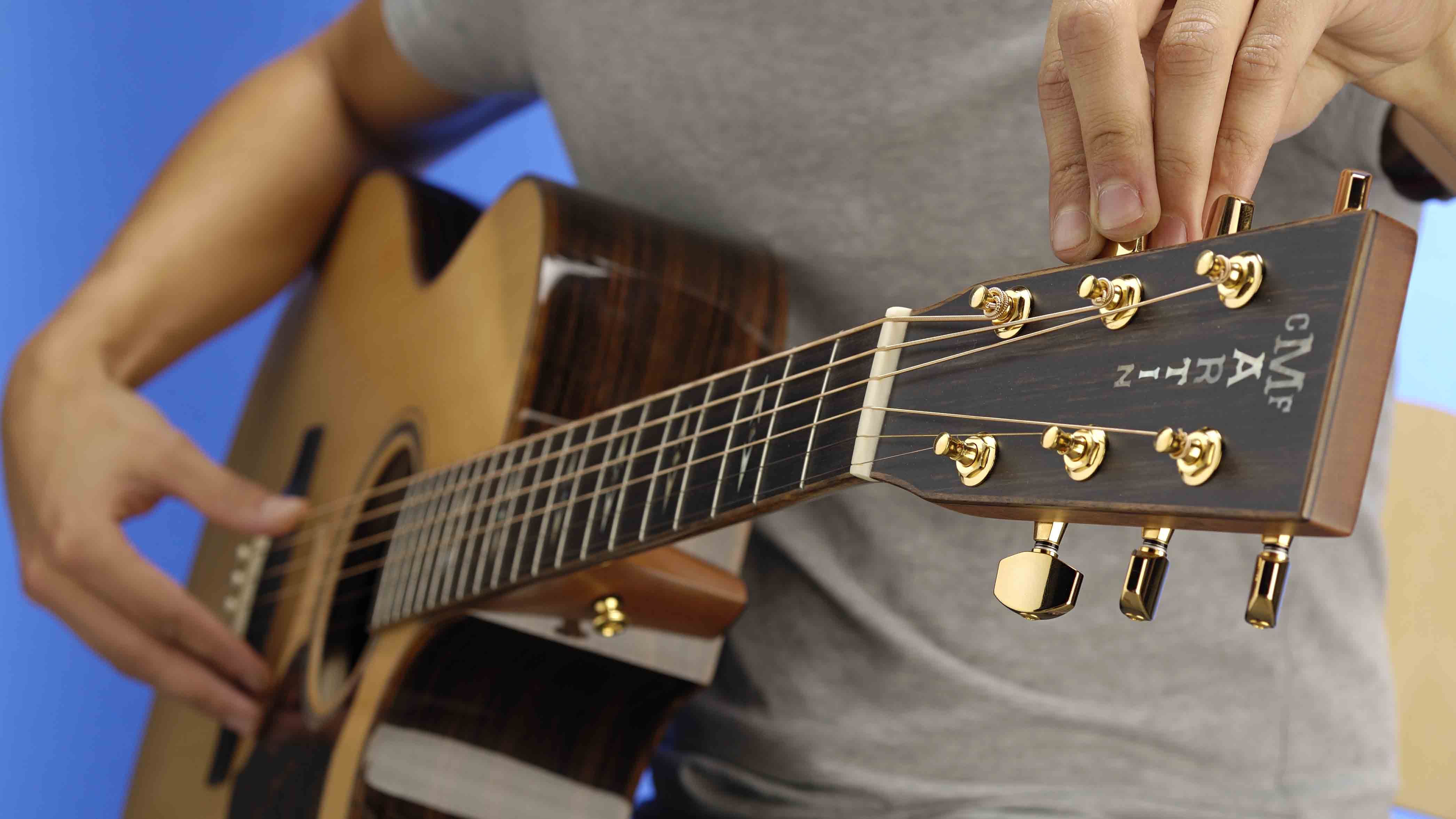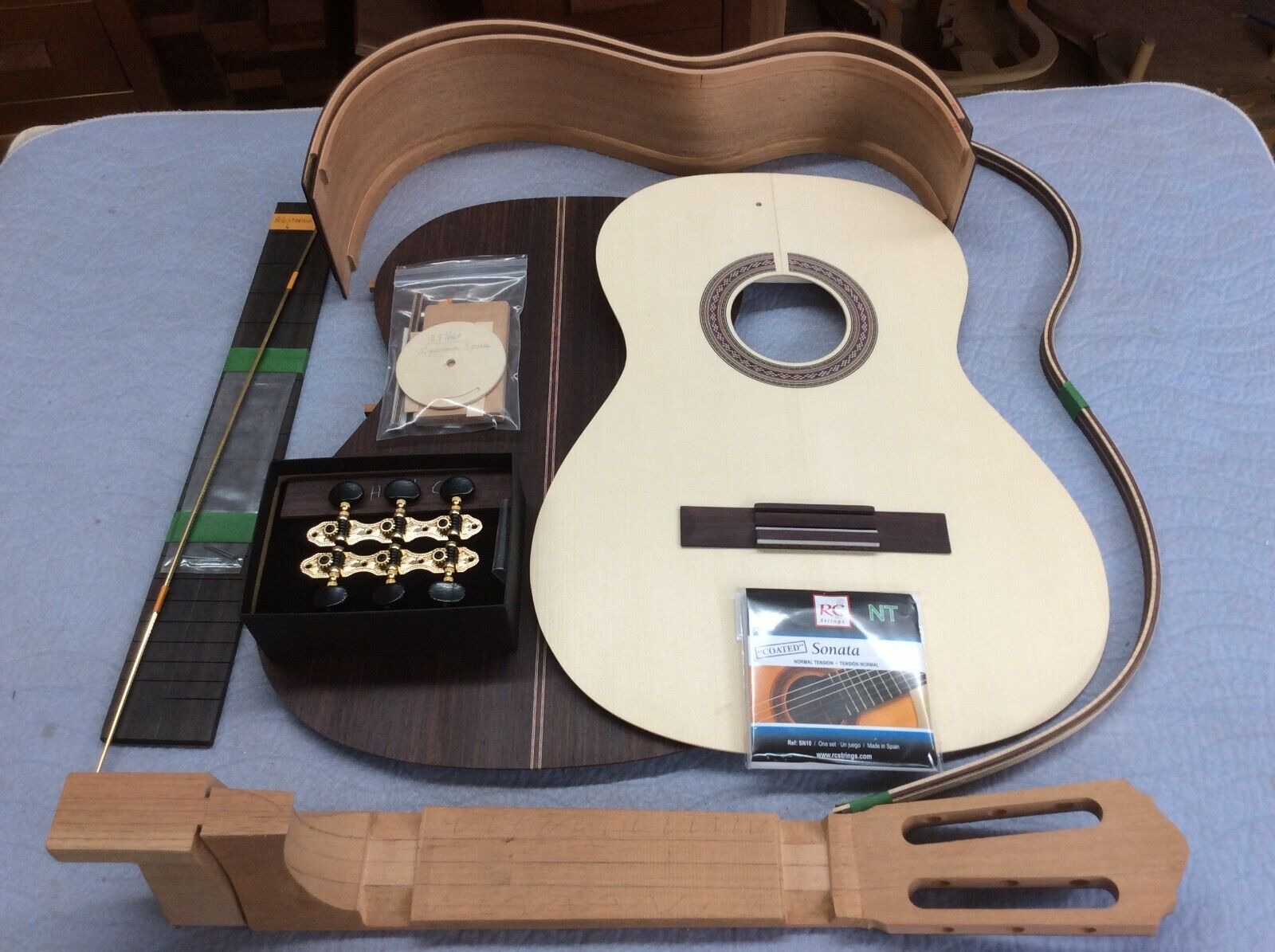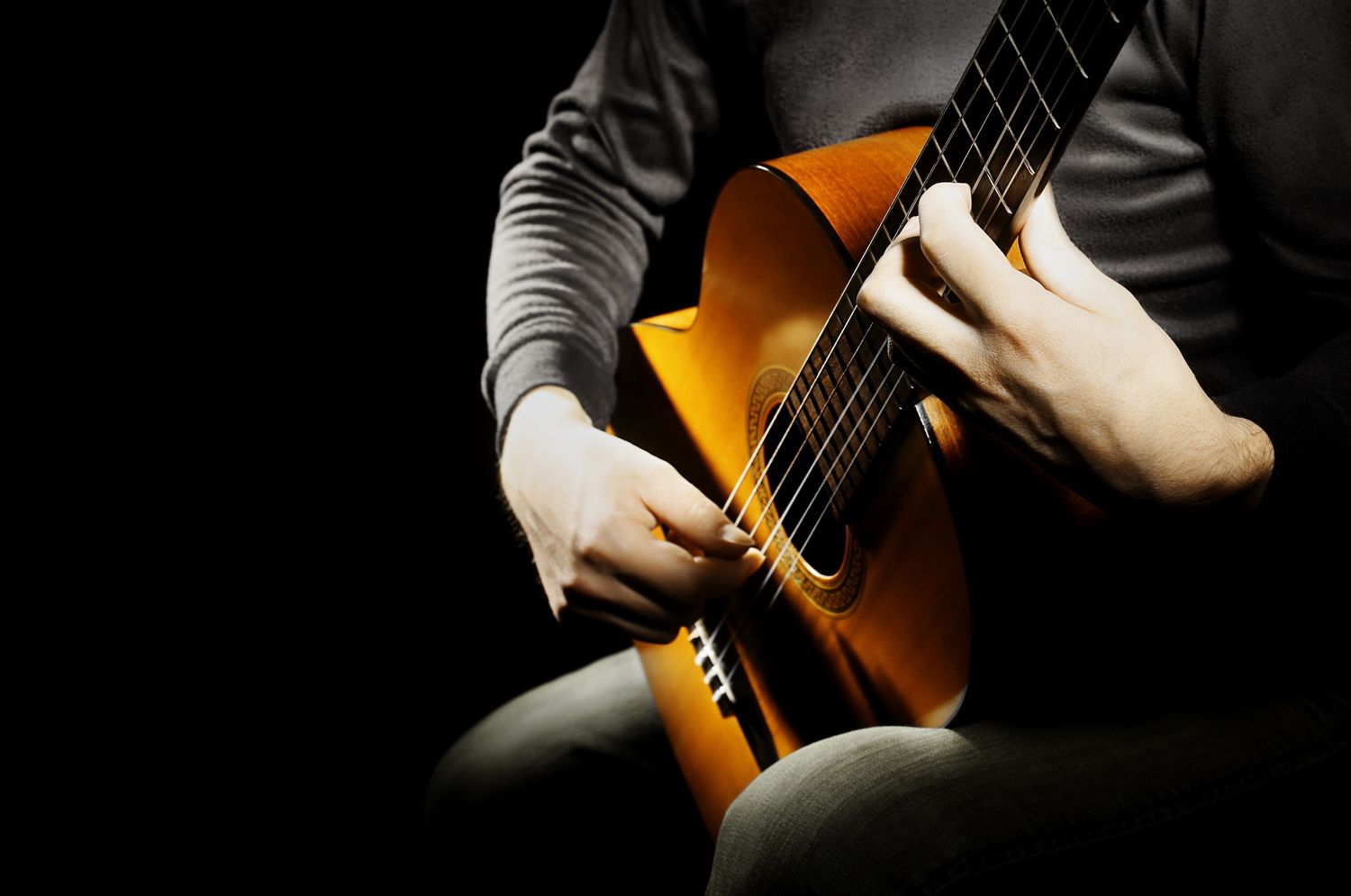Home>Genres>Classical>When Was The Classical Guitar Invented


Classical
When Was The Classical Guitar Invented
Modified: January 22, 2024
Discover the origins of the classical guitar and its fascinating history. Learn when this iconic instrument was first invented and how it has evolved over the centuries.
(Many of the links in this article redirect to a specific reviewed product. Your purchase of these products through affiliate links helps to generate commission for AudioLover.com, at no extra cost. Learn more)
Table of Contents
Introduction
The classical guitar is a timeless instrument that has captivated audiences for centuries with its beautiful sound and versatile playing techniques. It is an integral part of classical music, as well as a popular choice for musicians in various genres. Whether you’re a music lover or a guitarist yourself, understanding the origins and development of the classical guitar can deepen your appreciation for this beloved instrument.
Originating from ancient string instruments, the guitar has a rich history that dates back thousands of years. Its journey can be traced to ancient civilizations such as Mesopotamia, Egypt, and Greece. In these early times, the guitar took various forms, ranging from simple instruments with few strings to more elaborate designs with intricate carvings.
As time went on, the guitar continued to evolve, with the most significant advancements taking place during the Renaissance and Baroque periods. During these periods, the instrument underwent important changes in both its structure and playing techniques, paving the way for the development of the classical guitar as we know it today.
The classical guitar, also known as the Spanish guitar, reached its peak of popularity in the 19th and 20th centuries. This period saw the emergence of legendary guitar makers such as Antonio de Torres, who revolutionized the instrument’s design by introducing a larger body size and a fan-braced soundboard, resulting in improved resonance and tonal quality.
Today, the classical guitar holds a prominent place in the world of music. It is renowned for its warm and rich sound, as well as its ability to convey a wide range of emotions. From delicate, fingerpicked melodies to powerful, chordal passages, the classical guitar offers a vast palette of expression for musicians to explore.
Origins of the Guitar
The origins of the guitar can be traced back to ancient civilizations where stringed instruments were first developed. These early instruments, such as the lute and the lyre, laid the foundation for the creation of the guitar we know today.
The lute, which originated in Mesopotamia around 1900 BCE, was one of the earliest stringed instruments. It had a pear-shaped body and a rounded back, with frets positioned along the neck to produce different pitches. The lute gained popularity in ancient Greece and Rome, and its influence continued to spread throughout Europe.
Another precursor to the guitar was the lyre, an instrument widely used in ancient Egypt and Greece. The lyre had a small, U-shaped body and strings that were plucked with the fingers. Its design and playing technique influenced the development of the guitar, particularly in terms of string tension and fingerstyle playing.
During the Middle Ages, the guitar began to take shape in Europe. Early versions of the guitar had a flat back, rounded sound hole, and few strings. They were commonly played by troubadours and minstrels, accompanying their songs and poems. However, these early guitars lacked the distinct features and refinement of later instruments.
It wasn’t until the Renaissance period in the 16th century that the guitar started to undergo significant changes. With advancements in musical composition and techniques, the demand for a more versatile and expressive instrument grew. Guitar makers began experimenting with different designs and configurations, leading to the development of the classical guitar as we know it today.
Evolution of the Guitar
The evolution of the guitar spans centuries and has seen numerous changes in design, construction, and playing techniques. From its humble beginnings as a simple stringed instrument to the sophisticated and versatile instrument we know today, the guitar has undergone an incredible transformation.
During the Renaissance period in the 16th century, the guitar experienced a significant shift in its construction and playing style. The addition of additional strings, usually in pairs, allowed for greater tonal range and complexity. This marked the transition from the four-course guitar to the five-course guitar, which had five sets of double strings.
In the Baroque period of the 17th and 18th centuries, the guitar saw further developments that laid the foundation for the modern classical guitar. The six-course guitar, with six sets of double strings, became popular. The guitar’s body shape evolved, featuring a wider waist and a larger soundboard to enhance resonance and volume.
One of the most significant advancements during this period was the refinement of playing techniques. Guitarists began using their fingers to pluck the strings, a technique known as “fingerstyle” or “plucking.” This allowed for greater control and expression, as well as the ability to play polyphonic music with multiple voices.
By the 19th century, the guitar underwent further changes to its design and construction. Legendary guitar makers such as Antonio de Torres emerged, revolutionizing the instrument’s structure and materials. Torres introduced a larger body size, a fan-braced soundboard, and a slotted headstock, resulting in improved tonal quality and projection.
With the rise of classical guitar virtuosos in the 20th century, the instrument continued to evolve. Innovations such as the use of nylon strings, which provided better tone and playability, became popular. Guitar makers explored different body shapes and bracing patterns to cater to individual preferences and styles.
Today, the guitar continues to evolve, with advancements in technology and materials. Electric guitars have become prominent in various genres, offering a wide range of tones and effects. The classical guitar, on the other hand, preserves its tradition and remains a beloved instrument for classical music enthusiasts and guitarists seeking the warm and expressive qualities it embodies.
Development of the Classical Guitar
The classical guitar, also known as the Spanish guitar, has a rich and fascinating development that spans several centuries. Its evolution can be traced through changes in design, playing techniques, and the contributions of influential guitar makers and composers.
During the Baroque period in the 17th and 18th centuries, the classical guitar began to take shape as a solo instrument. It gained popularity in Spain, where it was known as the “vihuela” or “guitarra española.” The vihuela had a similar construction to the guitar, with a flat back, rounded soundhole, and six pairs of strings.
However, it was during the Romantic period in the 19th century that the classical guitar experienced significant developments that shaped its modern form. Guitar maker Antonio de Torres played a crucial role in revolutionizing the instrument’s design. Torres introduced a larger body size, a curved top, and fan-braced soundboard, which enhanced the guitar’s volume, projection, and tonal quality.
With these improvements, the classical guitar gained greater prominence among composers and performers. Influential guitar composers, such as Fernando Sor and Mauro Giuliani, wrote numerous works that showcased the expressive capabilities of the instrument. Their compositions helped establish the classical guitar as a legitimate solo instrument in Western music.
The 20th century brought further advancements in classical guitar playing techniques. Andrés Segovia, one of the most influential guitarists of the century, expanded the repertoire and elevated the status of the instrument through his virtuosic performances and collaborations with renowned composers. Segovia’s dedication to promoting the classical guitar led to increased interest and recognition of the instrument worldwide.
As the classical guitar gained popularity, additional innovations were introduced to improve playability and sound. Nylon strings replaced gut strings, offering a more consistent tone and durability. Many guitar makers experimented with different materials, such as cedar, spruce, and rosewood, to achieve specific tonal qualities.
Contemporary classical guitarists continue to push the boundaries of the instrument, exploring new playing techniques, expanding the repertoire, and collaborating with composers from various genres. The classical guitar remains an instrument of remarkable versatility and expression, capable of conveying a wide range of emotions and captivating audiences with its delicate melodies and powerful chords.
Notable Classical Guitar Composers
The classical guitar has inspired countless composers throughout history, resulting in a vast repertoire of music specifically composed for the instrument. From the Baroque period to the present day, numerous composers have left an indelible mark on the classical guitar landscape. Here are some notable classical guitar composers whose works continue to captivate audiences:
These are just a few examples of the many talented composers who have contributed to the classical guitar repertoire. Their creations continue to inspire and challenge guitarists, showcasing the instrument’s versatility and expressive potential.
The Influence of the Classical Guitar
The classical guitar has had a profound impact on the world of music, shaping genres, inspiring composers, and captivating audiences. Its influence extends beyond classical music, reaching into various genres and cultures. Here are some key ways in which the classical guitar has made its mark:
Expanding the Repertoire: The classical guitar has expanded the repertoire of solo instruments in Western classical music. Composers such as Fernando Sor, Mauro Giuliani, and Francisco Tárrega wrote pieces specifically for the guitar, showcasing the instrument’s unique qualities and enhancing its status as a solo instrument.
Popularizing Folk and World Music: The classical guitar has played a significant role in popularizing folk and world music traditions. Guitarists like Andrés Segovia and John Williams adapted and arranged traditional folk songs from various cultures, introducing them to new audiences and preserving their cultural heritage.
Influence on Popular Music: The classical guitar has had a profound influence on popular music genres. The unique sound and technique of the fingerstyle playing have inspired musicians across genres such as rock, jazz, and flamenco. Guitarists like Carlos Santana and Paco de Lucía have incorporated classical guitar elements into their music, creating a fusion of styles and expanding the sonic possibilities of their genres.
Inspiring Guitar Building Innovations: The classical guitar has inspired innovations in guitar building techniques and materials. Guitar makers like Antonio de Torres and Hermann Hauser introduced advancements in the construction of the classical guitar, improving its tone, projection, and playability. These innovations continue to shape the designs of guitars across all genres.
Cross-Cultural Exchange: The classical guitar has become a symbol of cross-cultural exchange, with enthusiasts and musicians from all over the world embracing the instrument. Its versatility and adaptability have allowed it to transcend cultural boundaries, enabling diverse musical traditions to be expressed and shared.
Education and Pedagogy: The classical guitar has played a vital role in music education and pedagogy. Guitar techniques developed for classical guitar, such as fingerstyle plucking and arpeggios, have become fundamental foundations for guitarists in various styles. The classical guitar’s structured training methods and repertoire have provided a framework for teaching and learning guitar technique and musicality.
Overall, the classical guitar’s influence extends far and wide, influencing composers, musicians, and cultures worldwide. It continues to be a source of inspiration for aspiring guitarists, a beloved instrument in classical music, and a bridge to connect different musical traditions.
Conclusion
The classical guitar, with its rich history and timeless sound, has captivated audiences and inspired musicians for centuries. From its ancient origins to its modern-day evolution, the guitar has undergone significant transformations, shaping genres, expanding musical possibilities, and leaving an indelible mark on the world of music.
Through the contributions of notable composers such as Fernando Sor, Mauro Giuliani, Francisco Tárrega, and many others, the classical guitar repertoire has grown to encompass a vast range of expressive and virtuosic compositions. These compositions highlight the instrument’s versatility and showcase its ability to convey a wide range of emotions.
The classical guitar’s influence extends far beyond the realm of classical music. It has played a role in popularizing folk and world music traditions, inspiring cross-genre collaborations, and becoming a symbol of cultural exchange. Guitar building innovations, inspired by the classical guitar’s sound and design, have influenced the construction of guitars in all genres.
Furthermore, the classical guitar has been instrumental in music education and pedagogy. Its structured training methods and repertoire have provided a solid foundation for guitarists across styles, while its unique fingerstyle playing techniques have influenced guitarists in rock, jazz, and flamenco, among other genres.
As we reflect on the journey of the classical guitar, it becomes evident that this instrument possesses a timeless allure. Its warm and expressive sound continues to captivate audiences, while its rich musical heritage connects us to the past and inspires future generations.
Whether you’re a devoted classical guitar aficionado or simply appreciate the beauty of its melodies, the classical guitar stands as a testament to the power of music and the enduring legacy of a cherished instrument.

